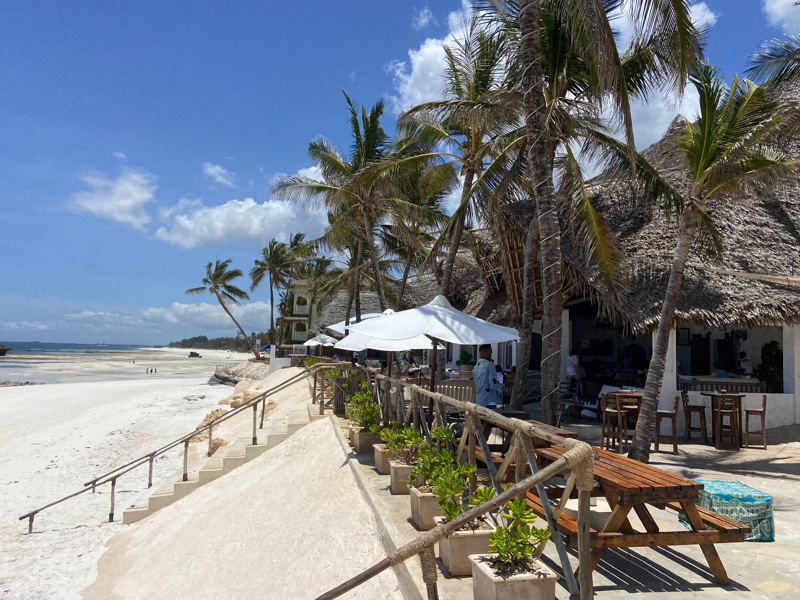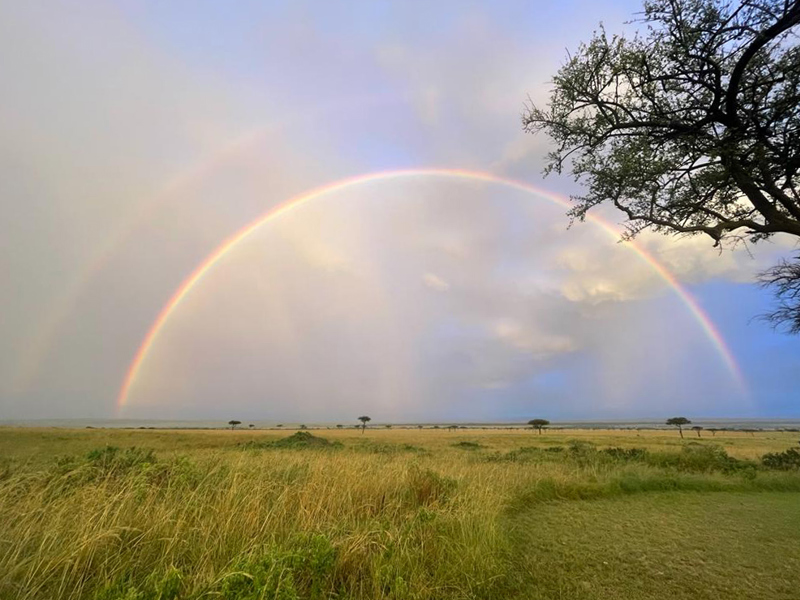When is the best time to visit Kenya?
Need help with timing your visit to Kenya? Even though it's always summer in Kenya, it's helpful to know when the dry - and wet seasons take place, what the best time is to go on safari, and when the peak season starts. We have gathered all you need to know and more, ensuring a well-prepared trip to Kenya. More questions? Feel free to get in touch with our team at Roadtrip Africa via our contact form!
What is the weather like in Kenya?
Kenya lies on the equator and has a pleasant tropical climate. Due to its size, the country does have large regional climatic variations:
- Amboseli, Meru, Samburu and Tsavo are located at lower altitudes and, therefore, warmer.
- The coastal towns are hot too.
- The cooler regions are - obviously - located at higher altitudes. This includes places like Nairobi, Masai Mara, Laikipia Plateau, Mount Kenya and the Western highlands.
Kenya weather by month
January & February – During these months, Kenya experiences a dry spell during the rainy season, resulting in no rainfall. It is also the hottest time of the year.
March, April & May – These months witness the highest rainfall, especially in April. It's mostly cloudy during this time, often culminating in heavy showers late in the afternoon or evening. Daytime temperatures are pleasant, and range between 24°C/75°F and 27°C/81°F at higher altitudes, while lower altitudes maintain more consistent temperatures around 30°C/86°F. Mornings at higher altitudes are cool, so we recommend bringing warm clothing for early morning game drives.
June to October – The dry season has the coldest months and runs from June to October. Daytime temperatures typically hover around 23°C/73°F at higher altitudes (e.g., Masai Mara) and 28°C/82°F at lower altitudes (e.g., coastal areas). The skies remain clear, days are sunny, and rainfall is minimal to nonexistent. Early morning temperatures at higher altitudes average around 10°C/50°F. It is advisable to pack warm clothing for early morning game drives or campfire evenings during this period.
November & December – Known as the 'Short Rains' season, this period, occurring between November and December, is normally characterized by unpredictable, brief rainfall lasting about a month. However, due to changing global weather patterns, Kenya is currently experiencing drought conditions, resulting in insufficient rainfall.

When is the high season in Kenya?
Tourists visit Kenya year-round. However, due to holidays around the world, it gets busier from December to January and from July to September. Be aware that Lake Nakuru and Amboseli National Park can feel crowded during peak season, as these are small but popular safari parks.
Most lodges in Kenya adopt their pricing according to the season, and there can be a 25% - 50% price difference between low and peak season rates.
If you plan to visit Kenya during its peak season, make sure to confirm your car rental with Roadtrip Africa well in advance. If you're travelling without camp gear, you'll also need to reserve your lodges on time to avoid disappointment.
The peak season at Masai Mara
Besides the high season months in Summer, the Masai Mara attracts many visitors from September to October as well. This is due to the wildebeest migration. We want to stress that Masai Mara offers superb wildlife viewing year-round. We understand you might be looking for that perfect shot of a crocodile capturing a wildebeest during the crossing. Keep in mind though, that this is a matter of chance, given the unpredictable nature of wildlife behaviour.
Still want to take a chance in September or October? Then be prepared for higher costs of Mobile Camps near the river crossing, and anticipate a significant presence of safari vehicles. For more information, we invite you to check out our Travel Blog on the Masai Mara.
This is the best time to visit Kenya
For a unique and potentially more rewarding travel experience in Kenya, consider skipping the high-season months. Instead, we encourage you to travel to Kenya during the low season, which typically spans April, May, and November.
Okke and Laura, the founders of Roadtrip Africa, experienced lots of drought during their high-season stay in January and February last year. The landscapes were barren, the roads dusty and the heat very intense. Colleague Sam, on the other hand, enjoyed lush and vibrant surroundings while travelling in May, with lazy days on the beach and pleasant temperatures throughout her trip.
Travelling during the low season also offers a unique social dynamic. Instead of the usual tourist crowds, expect to connect with fellow travellers, expats, and digital nomads. Locals are genuinely welcoming and helpful, especially in restaurants where the usual crowds may be thinner.
One final noteworthy advantage of low-season travel is the significant drop in lodge room rates, often ranging from 25-50% lower. This not only makes accommodations more budget-friendly, but also eliminates the need for booking well in advance.


